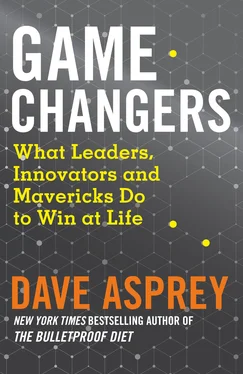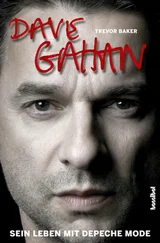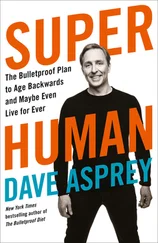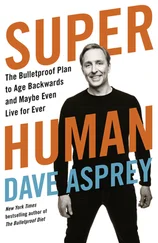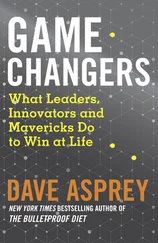A moment later, a nurse came in with a mug of tea. The mug had a picture of Albert Einstein on it with the famous quote “The same level of thinking that’s created the problem won’t solve the problem.” The universe had Jim’s back that day, because the mug helped him realize he had always thought the problem was that he was a slow learner, so he had tried to solve the problem by spending all of his time learning. Now he asked himself if he could think about the problem differently: Instead of spending more time learning, could he find a way to learn faster?
Jim thought back over his education. In school, his teachers had taught him what to learn, but he’d never taken a class on how to learn—on creativity, problem solving, or how to think, concentrate, read faster, and, most important, improve his memory. Socrates said, “Without remembering, there is no learning.” Jim realized that he could learn faster if he could remember more. So he began to study the mind and how it remembers to see if he could come up with shortcuts.
The memory techniques that Jim developed worked immediately. He went from struggling in his courses to getting straight A’s, and he soon started using his techniques to help other people. He didn’t want anyone to suffer or struggle the way he had.
One of Jim’s very first students more than two decades ago was a freshman who wanted to read thirty books in thirty days and was able to do so successfully using Jim’s techniques. He asked her why she wanted to do so and found out that her mother had been diagnosed with terminal cancer and was told she had sixty days to live. The books the student was reading were all about health, wellness, medicine, psychology, self-help, and spirituality—anything that she thought might be able to help save her mother’s life.
Six months later, Jim got a call. At first he couldn’t even make out the voice on the other end. All he heard was crying. Finally, he realized it was the same young woman. She was crying tears of joy because her mother not only had survived but was starting to get better and really thrive. The doctors didn’t know how or why that had happened, but her mother attributed it to the great advice her daughter had gotten so quickly from all of those books.
That was when Jim realized that his ideas could change lives and in some cases even save lives. Ever since, he’s been on a mission to help change the way people learn, help them fall in love with learning, and allow them to realize the genius they’re capable of. He focuses a lot of his work on reading, because reading is a fundamental way people learn. If an author possesses decades of experience and knowledge that he or she has put into a book and you can sit down and read that book in a day or two and directly download all of that information, that’s a powerful hack.
Unlike traditional speed-reading, which is more about skimming and getting the gist of what you read, Jim teaches how to read with greater focus and concentration so that you don’t just read faster but you also learn and remember what you read more efficiently. His method aptly breaks down into the acronym F-A-S-T:
F: FORGET
It may seem kind of weird, when talking about learning, reading, and memory, to start with forgetting, but Jim found that a lot of people fail to learn anything new when they feel as though they know the subject already. Let’s say you’re an expert in nutrition and you attend a seminar on the subject. You should be absorbing all of the latest information, but most people fail to do that because when they consider themselves experts they close themselves off to learning anything new. You have to temporarily forget what you already know about a subject so you can learn something new. It may be a cliché, but it’s true: Your mind is like a parachute; it works only when it’s open. To open yours, forget about what you already know.
You also want to forget about limitations. A lot of people have self-limiting beliefs about how good their memory is or how smart they are. As Vishen suggests, these beliefs can hold you back. Jim explains that your mind is always eavesdropping on your self-talk. If you tell yourself that you are not good at remembering people’s names, your mind won’t be open to learning at its full potential. This is exactly how your false beliefs become true.
The last thing that you need to forget is everything else that’s going on around you so that you can focus on what you are learning. Jim says that we can focus on only about seven bits of information at once. So if you’re reading a book and thinking about the kids and worrying about work and wondering if you should take the garbage out, you are left with only four bits of new information that you can focus on. Set all that aside so you can focus on the book and learn as much as possible.
A: ACTIVE
Twentieth-century education was based on the model of rote learning and repetition. A teacher stood in front of a class and stated facts for the students to repeat over and over again. The students did learn that way, but the problem with this type of learning is that it takes a lot of time. Jim compares it to working out: You can go to the gym and lift five-pound weights for an hour every day, or you can go far less frequently but dramatically increase the weight you lift. Intense learning, like intense exercise, gives you results in less time.
Jim says that in the twenty-first century, education should be based on creation, not consumption. That requires us to be active participants in our learning, grabbing for knowledge instead of letting it be spooned into our mouths. That means taking notes actively and sharing what you learn. These techniques not only help you learn, they enable you to remember what you’ve learned.
Jim recommends taking notes the old-fashioned way: with pen and paper. Put a line down the middle of the page. The left side is for “capture notes,” where you write down the thoughts and ideas you are learning; and the right side is for “creating notes,” where you write your impressions, thoughts, and questions about what you are learning. This strategy engages your whole brain so that you can learn faster and remember more.
S: STATE
All learning is state dependent. Jim defines your state as the current condition or mood of your brain and your body . A lot of people don’t realize that this is something that’s fully within their control. Most people think that if they’re bored, it’s because of their environment. If they’re down, it’s because something bad happened to them. But Jim says that we’re not thermometers, we’re thermostats, meaning that we don’t have to merely react to the environment around us. Instead, we can set a high standard for ourselves and then create and modify our environment to meet that setting.
T: TEACH
If you had to watch a video or read a book and then present it to someone else the next day, would you pay a different level of attention than you would otherwise? Would you organize or capture the information differently? If you ever have to learn a new subject or a new skill really fast, put on your professor’s cap. Ask yourself, “How would I teach this to someone else?” All of a sudden you’ll find that your retention of the information is doubled because you’re taking it in with the intention of being able to explain it to someone else.
This last point about teaching is more powerful than you might imagine. At the start of my career in Silicon Valley, I sought out a side job at the University of California teaching working engineers how to build the internet. I ended up running the Web and internet engineering program at UCSC’s Silicon Valley campus during the birth of the modern internet! That put me into a situation where I delivered a two-hour lecture several nights a week to a room of smart, experienced engineers. I had to absorb the material well enough to teach it, and I did. The result was that within two years, at the ripe age of twenty-seven, I was promoted to the head of technology-strategic planning for a billion-dollar company. There is simply no way I could have assimilated the knowledge required for that job had I not taught it first. So find an excuse to teach people what you want to learn, and you’ll master it more quickly than you think. If you’re not actually teaching something, pretend that you will be!
Читать дальше
